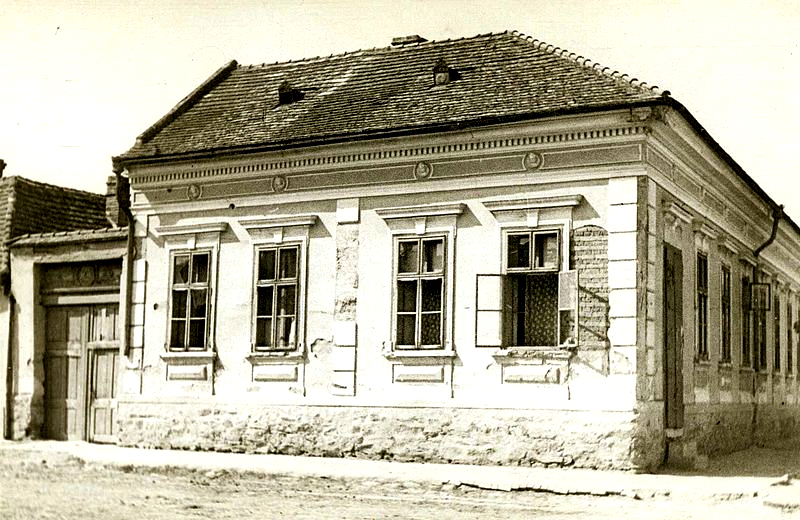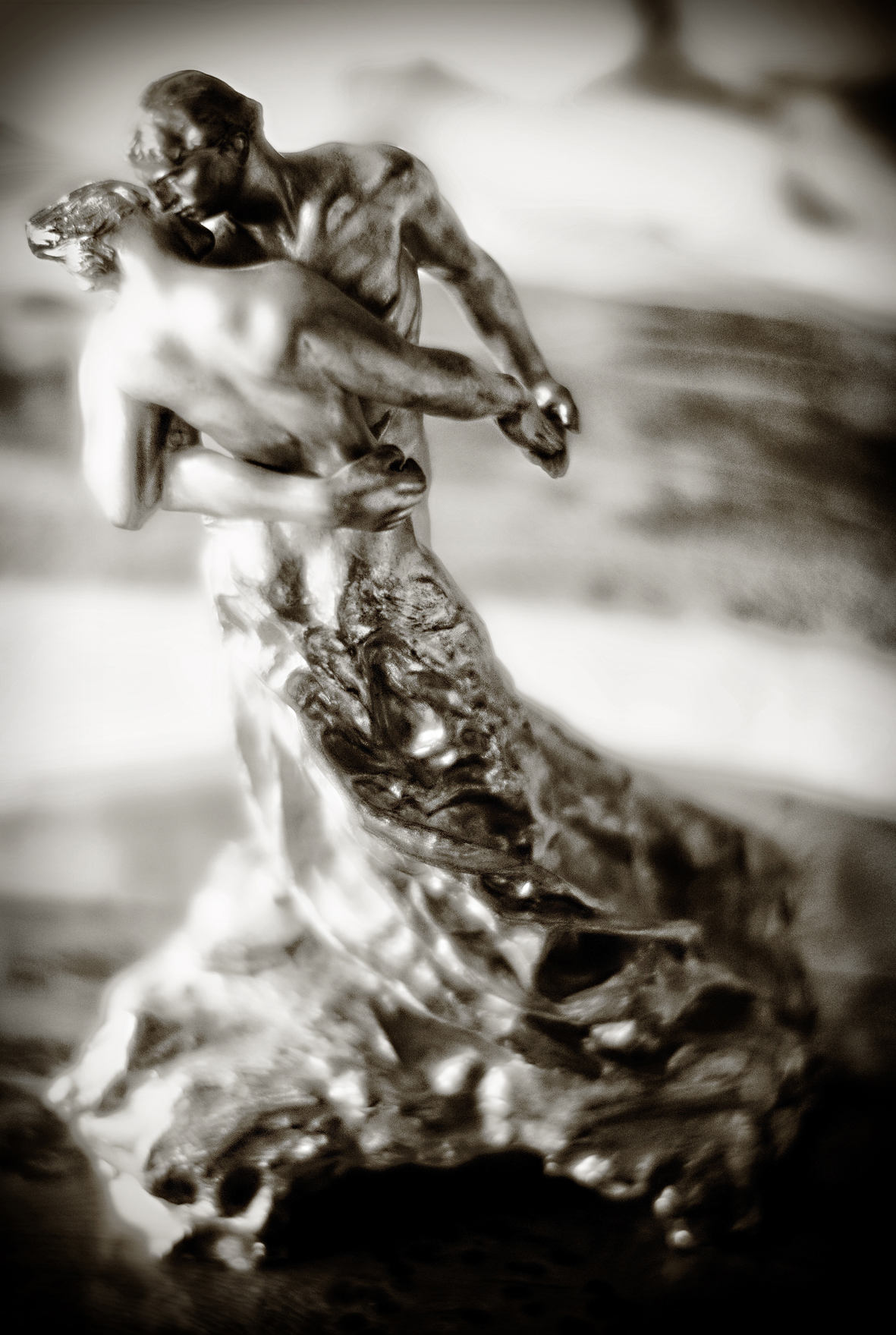|
Predrag Milošević
Predrag Milošević (Serbian Cyrillic: Предраг Милошевић; February 4, 1904 in Knjaževac – January 4, 1988 in Belgrade) was a composer, conductor, pianist, pedagogue, and music writer. As one of those musicians from Serbia who completed their university education in Prague, upon his return, Milošević significantly contributed to the foundation of music professionalism in his country. Biography Predrag Milošević was born in 1904 in Knjaževac. He began his music education at the Music School in Belgrade, and between 1922 and 1924 continued in Munich, and at the Prague State Conservatory. In Prague, he graduated in composition in 1926 with Professor Jaroslav Křička, in piano in 1928 with J. Prohaska, and conducting in 1931 with M. Doležil and P. Dědeček. Milošević supplemented his education at the Master school, where in 1930 he completed composition studies in the class of Josef Suk (composer), J. Suk and in 1931 a conducting seminar with N. Malko. Ev ... [...More Info...] [...Related Items...] OR: [Wikipedia] [Google] [Baidu] |
Serbian Cyrillic
The Serbian Cyrillic alphabet (, ), also known as the Serbian script, (, ), is a standardized variation of the Cyrillic script used to write the Serbian language. It originated in medieval Serbia and was significantly reformed in the 19th century by the Serbian philologist and linguist Vuk Karadžić. The Serbian Cyrillic alphabet is one of the two official scripts used to write modern standard Serbian, the other being Gaj's Latin alphabet. Karadžić based his reform on the earlier 18th-century Slavonic-Serbian script. Following the principle of "write as you speak and read as it is written" (''piši kao što govoriš, čitaj kao što je napisano''), he removed obsolete letters, eliminated redundant representations of iotated vowels, and introduced the letter from the Latin script. He also created new letters for sounds unique to Serbian phonology. Around the same time, Ljudevit Gaj led the standardization of the Latin script for use in western South Slavic languages, appl ... [...More Info...] [...Related Items...] OR: [Wikipedia] [Google] [Baidu] |
Association Of Music Artists Of Serbia
The Association of Musical Artists of Serbia (Serbian:''Udruženje muzičkih umetnika Srbije'', also known as ''UMUS'') is an association which gathers together musicians from Serbia who dedicated themselves to performing classical music. The goals of the Association include: participating in cultural and artistic activities, elevating the musical education of audiences, training the members, protecting performance copyrights, and assisting young artists in their performances. It is a non-profit organization, subsidized by the Ministry of Culture of the Republic of Serbia. ''UMUS'' cooperates with the Secretariat of Culture of the City of Belgrade, as well as with institutions and individuals. Activities The association has organized concerts of their members, both in Belgrade ( Kolarac's Legacy Concert Hall, Belgrade Philharmonic Orchestra, Gallery of Frescoes, National Museum Hall, Vračar Centre of Culture, Vuk Karadžić Centre of Culture, Music School Stanković, Music Scho ... [...More Info...] [...Related Items...] OR: [Wikipedia] [Google] [Baidu] |
1904 Births
Events January * January 7 – The distress signal ''CQD'' is established, only to be replaced 2 years later by ''SOS''. * January 8 – The Blackstone Library is dedicated, marking the beginning of the Chicago Public Library system. * January 12 – The Herero Wars in German South West Africa begin. * January 17 – Anton Chekhov's last play, ''The Cherry Orchard'' («Вишнëвый сад», ''Vishnevyi sad''), opens at the Moscow Art Theatre directed by Constantin Stanislavski, 6 month's before the author's death. * January 23 – The Ålesund fire destroys most buildings in the town of Ålesund, Norway, leaving about 10,000 people without shelter. * January 25 – Halford Mackinder presents a paper on "The Geographical Pivot of History" to the Royal Geographical Society of London in which he formulates the Heartland Theory, originating the study of geopolitics. February * February 7 – The Great Baltimore Fire in Baltimore, Maryland, destroys over 1,500 build ... [...More Info...] [...Related Items...] OR: [Wikipedia] [Google] [Baidu] |
Vlastimir Peričić
Vlastimir Peričić (7 December 1927 in Vršac – 1 March 2000 in Belgrade) was a Serbian composer and one of the most important theoreticians of Serbian music, well-known musicologist and the author of extremely valuable university textbooks, as well as a corresponding member of the Serbian Academy of Arts and Sciences. Biography Vlastimir Peričić was the son of Juraj and Jelica Peričić, maiden name Nikolajević . Attended elementary school in Zemun from 1934 to 1938, grammar school in Zemun from 1938 to 1941 and in Belgrade from 1941 to 1946. Enrolled high school of music at the Belgrade Academy in 1941, the Music Academy in 1945, graduated from the Department of Composition at the Music Academy of Belgrade (the class of professor Stanojlo Rajičić) in 1951. In the period from 1945 to 1947 worked as an intern in the Natural History Museum in Belgrade, from 1948 to 1951 as a part-time lecturer of solfeggio and basic music theory at the Music School Josif Marinković ... [...More Info...] [...Related Items...] OR: [Wikipedia] [Google] [Baidu] |
Violin
The violin, sometimes referred to as a fiddle, is a wooden chordophone, and is the smallest, and thus highest-pitched instrument (soprano) in regular use in the violin family. Smaller violin-type instruments exist, including the violino piccolo and the pochette (musical instrument), pochette, but these are virtually unused. Most violins have a hollow wooden body, and commonly have four strings (music), strings (sometimes five-string violin, five), usually tuned in perfect fifths with notes G3, D4, A4, E5, and are most commonly played by drawing a bow (music), bow across the strings. The violin can also be played by plucking the strings with the fingers (pizzicato) and, in specialized cases, by striking the strings with the wooden side of the bow (col legno). Violins are important instruments in a wide variety of musical genres. They are most prominent in the Western classical music, Western classical tradition, both in ensembles (from chamber music to orchestras) and as solo ... [...More Info...] [...Related Items...] OR: [Wikipedia] [Google] [Baidu] |
Passacaglia
The passacaglia (; ) is a musical form that originated in early seventeenth-century Spain and is still used today by composers. It is usually of a serious character and is typically based on a bass- ostinato and written in triple metre. Origin The term passacaglia (; ; Italian: ''passacaglia'', ''passacaglio'', ''passagallo'', ''passacagli'', ''passacaglie'') derives from the Spanish ''pasar'' (cross, pass) and ''calle'' (street). It originated in early 17th-century Spain as a strummed interlude between instrumentally accompanied dances or songs. Despite the form's Spanish roots (confirmed by references in Spanish literature of the period), the first written examples of passacaglias are found in an Italian source dated 1606. These pieces, as well as others from Italian sources from the beginning of the century, are simple, brief sequences of chords outlining a cadential formula. The passacaglia was redefined in the late 1620s by Italian composer Girolamo Frescobaldi, who trans ... [...More Info...] [...Related Items...] OR: [Wikipedia] [Google] [Baidu] |
Atonal
Atonality in its broadest sense is music that lacks a tonal center, or key. ''Atonality'', in this sense, usually describes compositions written from about the early 20th-century to the present day, where a hierarchy of harmonies focusing on a single, central triad is not used, and the notes of the chromatic scale function independently of one another. More narrowly, the term ''atonality'' describes music that does not conform to the system of tonal hierarchies that characterized European classical music between the seventeenth and nineteenth centuries. "The repertory of atonal music is characterized by the occurrence of pitches in novel combinations, as well as by the occurrence of familiar pitch combinations in unfamiliar environments". The term is also occasionally used to describe music that is neither tonal nor serial, especially the pre- twelve-tone music of the Second Viennese School, principally Alban Berg, Arnold Schoenberg, and Anton Webern. However, "as a cat ... [...More Info...] [...Related Items...] OR: [Wikipedia] [Google] [Baidu] |
Polytonal
Polytonality (also polyharmony) is the musical use of more than one key (music), key simultaneity (music), simultaneously. Bitonality is the use of only two different keys at the same time. Polyvalence or polyvalency is the use of more than one diatonic function, harmonic function, from the same key, at the same time. Some examples of bitonality superimpose fully harmony, harmonized sections of music in different keys. History In traditional music Lithuanian traditional singing style sutartines is based on polytonality. A typical sutartines song is based on a six-bar melody, where the first three bars contain melody based on the notes of the triad of a major key (for example, in G major), and the next three bars is based on another key, always a major second higher or lower (for example, in A major). This six-bar melody is performed as a canon (music), canon, and repetition starts from the fourth bar. As a result, parts are constantly singing in different tonality (key) simulta ... [...More Info...] [...Related Items...] OR: [Wikipedia] [Google] [Baidu] |
Stevan Stojanović Mokranjac
Stevan Stojanović ( sr-Cyrl, Стеван Стојановић, ; 9 January 1856 – 28 September 1914), known as Stevan Mokranjac ( sr-Cyrl, Стеван Мокрањац, ) was a Serbian composer and music educator. Born in Negotin in 1856, Mokranjac studied music in Belgrade, Munich, Rome and Leipzig while in his twenties. Later, he became the conductor of the Belgrade Choir Society and founder of the Serbian School of Music and the first Serbian string quartet, in which he played the cello. He left Belgrade at the beginning of World War I and moved to Skopje, where he died on 28 September 1914. Often called the "father of Serbian music" and the "most important figure of Serbian musical romanticism", Mokranjac is well-regarded and much revered in Serbia. Following his death, the Serbian Music School was renamed the Mokranjac Music School in his honour. He has been featured on the country's paper currency and that of the Federal Republic of Yugoslavia. In 1964, the Mokra ... [...More Info...] [...Related Items...] OR: [Wikipedia] [Google] [Baidu] |
Waltz
The waltz ( , meaning "to roll or revolve") is a ballroom dance, ballroom and folk dance, in triple (3/4 time, time), performed primarily in closed position. Along with the ländler and allemande, the waltz was sometimes referred to by the generic term German Dance in publications during the late 18th and early 19th centuries. History There are many references to a sliding or gliding dance, including ''volte'', that would evolve into the waltz that date from 16th-century Europe, including the representations of the Printmaking, printmaker Sebald Beham, Hans Sebald Beham. The French philosopher Michel de Montaigne wrote of a dance he saw in 1580 in Augsburg, where the dancers held each other so closely that their faces touched. Kunz Haas (of approximately the same period) wrote, "Now they are dancing the godless ''Weller'' or ''Spinner''."Nettl, Paul. "Birth of the Waltz." In ''Dance Index'' vol 5, no. 9. 1946 New York: Dance Index-Ballet Caravan, Inc. pages 208, 211 "The ... [...More Info...] [...Related Items...] OR: [Wikipedia] [Google] [Baidu] |
Oboes
The oboe ( ) is a type of double-reed woodwind instrument. Oboes are usually made of wood, but may also be made of synthetic materials, such as plastic, resin, or hybrid composites. The most common type of oboe, the soprano oboe pitched in C, measures roughly long and has metal keys, a conical bore and a flared bell. Sound is produced by blowing into the reed at a sufficient air pressure, causing it to vibrate with the air column. The distinctive tone is versatile and has been described as "bright". When the word ''oboe'' is used alone, it is generally taken to mean the soprano member rather than other instruments of the family, such as the bass oboe, the cor anglais (English horn), or oboe d'amore. Today, the oboe is commonly used as orchestral or solo instrument in symphony orchestras, concert bands and chamber ensembles. The oboe is especially used in classical music, film music, some genres of folk music, and is occasionally heard in jazz, rock, pop, and popular musi ... [...More Info...] [...Related Items...] OR: [Wikipedia] [Google] [Baidu] |
Bassoons
The bassoon is a musical instrument in the woodwind family, which plays in the tenor and bass ranges. It is composed of six pieces, and is usually made of wood. It is known for its distinctive tone color, wide range, versatility, and virtuosity. It is a non-transposing instrument and typically its music is written in the bass and tenor clefs, and sometimes in the treble. There are two forms of modern bassoon: the Buffet (or French) and Heckel (or German) systems. It is typically played while sitting using a seat strap, but can be played while standing if the player has a harness to hold the instrument. Sound is produced by rolling both lips over the reed and blowing direct air pressure to cause the reed to vibrate. Its fingering system can be quite complex when compared to those of other instruments. Appearing in its modern form in the 19th century, the bassoon figures prominently in orchestral, concert band, and chamber music literature, and is occasionally heard in pop, rock, a ... [...More Info...] [...Related Items...] OR: [Wikipedia] [Google] [Baidu] |







